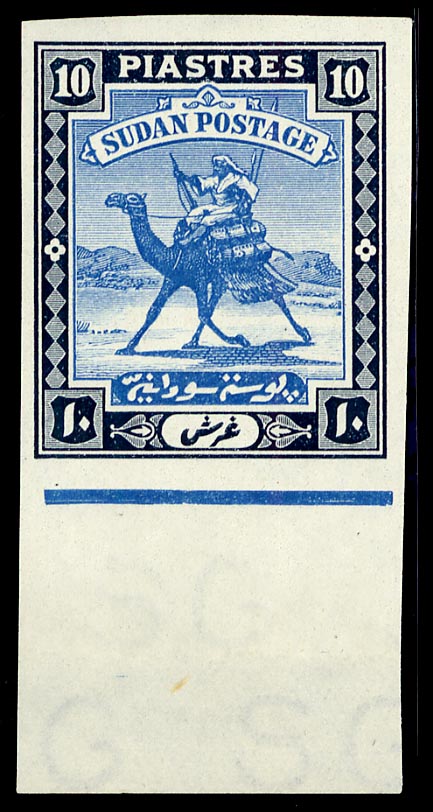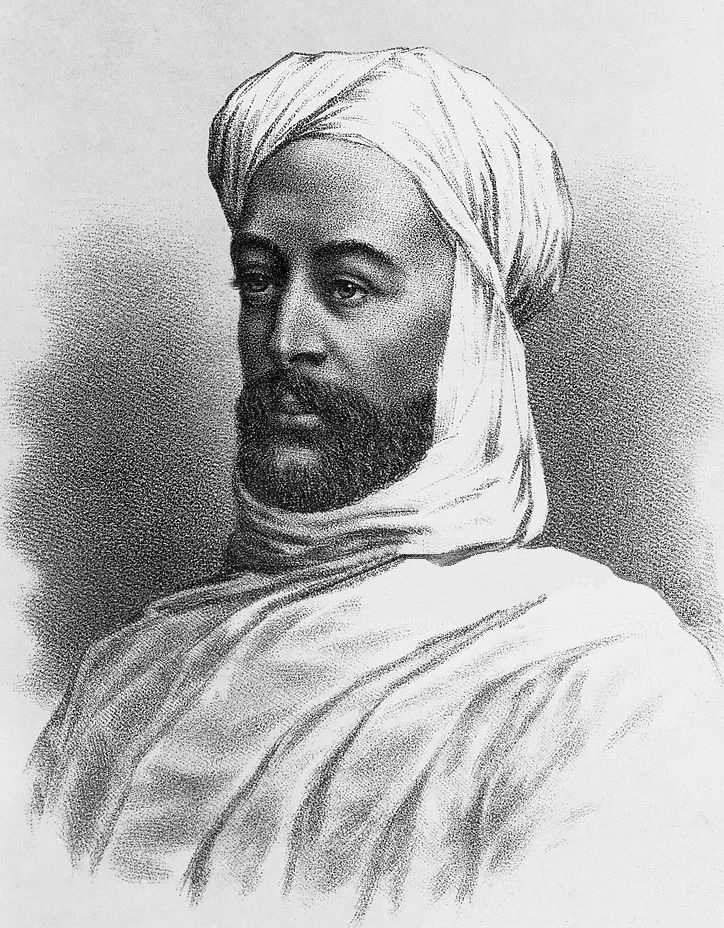|
Ingessana Hills
Ingessana (Gaahmg, Tabi) are the members of an African ethnic group of Sudan who speak the Gaam language. They live around the Tabi Hills, southwest of Ad-Damazin and northwest of Kurmuk in the Blue Nile Province. The capital of the Ingessana area is Bao (11.350797,34.083710), and the government offices are in Soda. Subgroups There are 4 major subgroups of the Ingessana: the Jok Kulelek, the Jok Bulek, the Jok Gor, and the Jok Tau. Each of these major subgroups of the Ingessana has an economic specialisation: the Jok Kulelek own great heards of livestock, the Jok Bulek are known for their farming capabilities, the Jok Gor are skilled weavers and the Jok Tau specialise as blacksmiths and iron workers. History As Jedrej (1995) explains, the Gaahmg (Ingessana) have historically protected themselves and their hills from many invasions by outsiders. As a result, their culture is much more resistant to change than that of other ethnic groups of the southern Blue Nile region. Mai ... [...More Info...] [...Related Items...] OR: [Wikipedia] [Google] [Baidu] |
Sudan
Sudan ( or ; ar, السودان, as-Sūdān, officially the Republic of the Sudan ( ar, جمهورية السودان, link=no, Jumhūriyyat as-Sūdān), is a country in Northeast Africa. It shares borders with the Central African Republic to the southwest, Chad to the west, Egypt to the north, Eritrea to the northeast, Ethiopia to the southeast, Libya to the northwest, South Sudan to the south and the Red Sea. It has a population of 45.70 million people as of 2022 and occupies 1,886,068 square kilometres (728,215 square miles), making it Africa's List of African countries by area, third-largest country by area, and the third-largest by area in the Arab League. It was the largest country by area in Africa and the Arab League until the 2011 South Sudanese independence referendum, secession of South Sudan in 2011, since which both titles have been held by Algeria. Its Capital city, capital is Khartoum and its most populated city is Omdurman (part of the metropolitan area of Khar ... [...More Info...] [...Related Items...] OR: [Wikipedia] [Google] [Baidu] |
Turkish Sudan
Turkish Sudan (), also known as Turkiyya ( ar, التركية, ''at-Turkiyyah''), describes the rule of the Eyalet and later Khedivate of Egypt over what is now Sudan and South Sudan. It lasted from 1820, when Muhammad Ali Pasha started his conquest of Sudan, to the fall of Khartoum in 1885 to Muhammad Ahmad, the self-proclaimed Mahdi. Background Although a part of present-day northern Sudan was nominally an Egyptian dependency during the Mamluk and Ottoman periods, previous Egyptian rulers had demanded little more from the Sudanese Kashif than the regular remittance of tribute. After Muhammad Ali crushed the Mamluks in Egypt, a party of them escaped and fled south. In 1811 these Mamluks established a state at Dunqulah as a base for their slave trading. In 1820 the Sultan of Sennar informed Muhammad Ali that he was unable to comply with the demand to expel the Mamluks. In response Muhammad Ali sent 4,000 troops to invade Sudan, clear it of Mamluks, and incorporate it into E ... [...More Info...] [...Related Items...] OR: [Wikipedia] [Google] [Baidu] |
Berta People
The Berta (Bertha) or Funj are an ethnic group living along the border of Sudan and Ethiopia. They speak a Nilo-Saharan language that is not related to those of their Nilo-Saharan neighbors ( Gumuz, Uduk). Their total Ethiopian population is about 183,000 people. History Their origins are to be found in Sennar in eastern Sudan, in the area of the former Funj sultanate (1521-1804). During the 16th or 17th century, they migrated to western Ethiopia, in the area of the modern Benishangul-Gumuz Region. "Benishangul" is an Arabicized form of the original name ''Bela Shangul'', meaning "Rock of Shangul". This refers to a sacred stone located in a mountain in the Menge woreda, one of the places where the Berta originally settled when they arrived to Ethiopia. Their arrival in Ethiopia was marked by strong territorial conflict among the diverse Shangul communities. For this reason, and for protecting themselves from slave raids coming from Sudan, the Shangul communities decided to est ... [...More Info...] [...Related Items...] OR: [Wikipedia] [Google] [Baidu] |
Land Grabbing
Land grabbing is the contentious issue of large-scale land acquisitions: the buying or leasing of large pieces of land by domestic and transnational companies, governments, and individuals. While used broadly throughout history, land grabbing as used in the 21st century primarily refers to large-scale land acquisitions following the 2007–08 world food price crisis. Obtaining water resources is usually critical to the land acquisitions, so it has also led to an associated trend of water grabbing.Maria Cristina Rullia, Antonio Savioria, and Paolo D’OdoricoGlobal Land and Water Grabbing ''Proceedings of the National Academy of Sciences'' 110, no. 3 (2013): 892–97. By prompting food security fears within the developed world and newfound economic opportunities for agricultural investors, the food price crisis caused a dramatic spike in large-scale agricultural investments, primarily foreign, in the Global South for the purpose of industrial food and biofuels production. Altho ... [...More Info...] [...Related Items...] OR: [Wikipedia] [Google] [Baidu] |
Italian East Africa
Italian East Africa ( it, Africa Orientale Italiana, AOI) was an Italian colony in the Horn of Africa. It was formed in 1936 through the merger of Italian Somalia, Italian Eritrea, and the newly occupied Ethiopian Empire, conquered in the Second Italo-Ethiopian War. Italian East Africa was divided into six governorates. Eritrea and Somalia, Italian possessions since the 1880s, were enlarged with captured Ethiopian territory and became the Eritrea and Somalia Governorates. The remainder of "Italian Ethiopia" consisted the Harar, Galla-Sidamo, Amhara, and Scioa Governorates. Fascist colonial policy had a divide and conquer characteristic, and favoured the Oromos, the Somalis and other Muslims in an attempt to weaken their ties to the Amharas who had been the ruling ethnic group in the Ethiopian Empire. During the Second World War, Italian East Africa was occupied by a British-led force including colonial units and Ethiopian guerrillas in November 1941. After the war, I ... [...More Info...] [...Related Items...] OR: [Wikipedia] [Google] [Baidu] |
George Steer
Memorial to George Steer in Basque_Country,_ Guernica,_Biscay,_Basque_Country_(greater_region)">Basque_Country,_Spain">Biscay">Guernica,_Biscay,_Basque_Country_(greater_region)">Basque_Country,_ Guernica,_Biscay,_Basque_Country_(greater_region)">Basque_Country,_Spain">Biscay">Guernica,_Biscay,_Basque_Country_(greater_region)">Basque_Country,_Spain">thumb.html" ;"title="Spain.html" ;"title="Spain.html" ;"title="Biscay">Guernica, Biscay, Basque Country (greater region)">Basque Country, Spain">Biscay">Guernica, Biscay, Basque Country (greater region)">Basque Country, Spain">thumb">230px George Lowther Steer (22 November 1909 – 25 December 1944) was a South African-born British journalist, author and war correspondent who reported on wars preceding World War II, especially the Second Italo-Abyssinian War and the Spanish Civil War. During those wars he was employed by ''The Times'', and his eye-witness reports did much to alert western nations of war crimes committed by the Italian ... [...More Info...] [...Related Items...] OR: [Wikipedia] [Google] [Baidu] |
Akira Okazaki
Akira may refer to: Arts and entertainment * ''Akira'' (franchise), a Japanese cyberpunk franchise ** ''Akira'' (manga), a 1980s cyberpunk manga by Katsuhiro Otomo ** ''Akira'' (1988 film), an anime film adaptation of the manga ** ''Akira'' (video game), a 1988 video game based on the anime film **'' Akira Psycho Ball'', a 2002 pinball simulator for PlayStation 2 based on the anime film ** ''Akira'' (planned film), a planned live-action film adaptation of the manga * ''Akira'' (2016 Hindi film), a Bollywood film starring Konkana Sen Sharma, Sonakshi Sinha and Anurag Kashyap * ''Akira'' (2016 Kannada film), a Kannada film starring Anish Tejeshwar * ''Akira'' (album), a 2017 album by Black Cab *"Akira", a song by Kaddisfly from ''Buy Our Intention; We'll Buy You a Unicorn'' Characters *Akira Yuki, a major character of the ''Virtua Fighter'' series of video games * Akira (''The Simpsons''), a Japanese chef on ''The Simpsons'' * Akira (''Akira''), a character from the 1980s cyberpunk ... [...More Info...] [...Related Items...] OR: [Wikipedia] [Google] [Baidu] |
Charles Jȩdrej
Charles is a masculine given name predominantly found in English and French speaking countries. It is from the French form ''Charles'' of the Proto-Germanic name (in runic alphabet) or ''*karilaz'' (in Latin alphabet), whose meaning was "free man". The Old English descendant of this word was '' Ċearl'' or ''Ċeorl'', as the name of King Cearl of Mercia, that disappeared after the Norman conquest of England. The name was notably borne by Charlemagne (Charles the Great), and was at the time Latinized as ''Karolus'' (as in ''Vita Karoli Magni''), later also as '' Carolus''. Some Germanic languages, for example Dutch and German, have retained the word in two separate senses. In the particular case of Dutch, ''Karel'' refers to the given name, whereas the noun ''kerel'' means "a bloke, fellow, man". Etymology The name's etymology is a Common Germanic noun ''*karilaz'' meaning "free man", which survives in English as churl (< Old English ''ċeorl''), which developed its depr ... [...More Info...] [...Related Items...] OR: [Wikipedia] [Google] [Baidu] |
Throwing Knife
A throwing knife is a knife that is specially designed and weighted so that it can be thrown effectively. They are a distinct category from ordinary knives. Throwing knives are used by many cultures around the world, and as such different tactics for throwing them have been developed, as have different shapes and forms of throwing knife. Throwing knives are also used in sport. Central Africa Throwing knives saw use in central Africa. The wide area they were used over means that they were referred to by a number of names such as Onzil, Kulbeda, Mambele, Pinga and Trombash. These weapons had multiple iron blades and were used for warfare and hunting. A maximum effective range of about 50 yards has been suggested. The weapon appears to have originated in central Sudan somewhere around 1000 AD from where it spread south. It has however been suggested that the same weapon is depicted in Libyan wall sculptures dating around 1350 BC. The throwing knives were extensively collected b ... [...More Info...] [...Related Items...] OR: [Wikipedia] [Google] [Baidu] |
Anglo-Egyptian Sudan
Anglo-Egyptian Sudan ( ar, السودان الإنجليزي المصري ') was a condominium of the United Kingdom and Egypt in the Sudans region of northern Africa between 1899 and 1956, corresponding mostly to the territory of present-day Sudan and South Sudan. Legally, sovereignty and administration were shared between both Egypt and the United Kingdom, but in practice the structure of the condominium ensured effective British control over Sudan, with Egypt having limited, local power influence in reality. In the mean time, Egypt itself fell under increasing British influence. Following the Egyptian Revolution of 1952, Egypt pushed for an end to the condominium, and the independence of Sudan. By agreement between Egypt and the United Kingdom in 1953, Sudan was granted independence as the Republic of the Sudan on 1 January 1956. In 2011, the south of Sudan itself became independent as the Republic of South Sudan. In the 19th century, whilst nominally a vassal state of the ... [...More Info...] [...Related Items...] OR: [Wikipedia] [Google] [Baidu] |
Mahdist State
The Mahdist State, also known as Mahdist Sudan or the Sudanese Mahdiyya, was a state based on a religious and political movement launched in 1881 by Muhammad Ahmad bin Abdullah (later Muhammad al-Mahdi) against the Khedivate of Egypt, which had ruled the Sudan since 1821. After four years of struggle, the Mahdist rebels overthrew the Ottoman-Egyptian administration and established their own "Islamic and national" government with its capital in Omdurman. Thus, from 1885 the Mahdist government maintained sovereignty and control over the Sudanese territories until its existence was terminated by the Anglo-Egyptian forces in 1898. Mohammed Ahmed al-Mahdi enlisted the people of Sudan in what he declared a jihad against the administration that was based in Khartoum, which was dominated by Egyptians and Turks. The Khartoum government initially dismissed the Mahdi's revolution; he defeated two expeditions sent to capture him in the course of a year. The Mahdi's power increased, and his ... [...More Info...] [...Related Items...] OR: [Wikipedia] [Google] [Baidu] |
.jpg)





